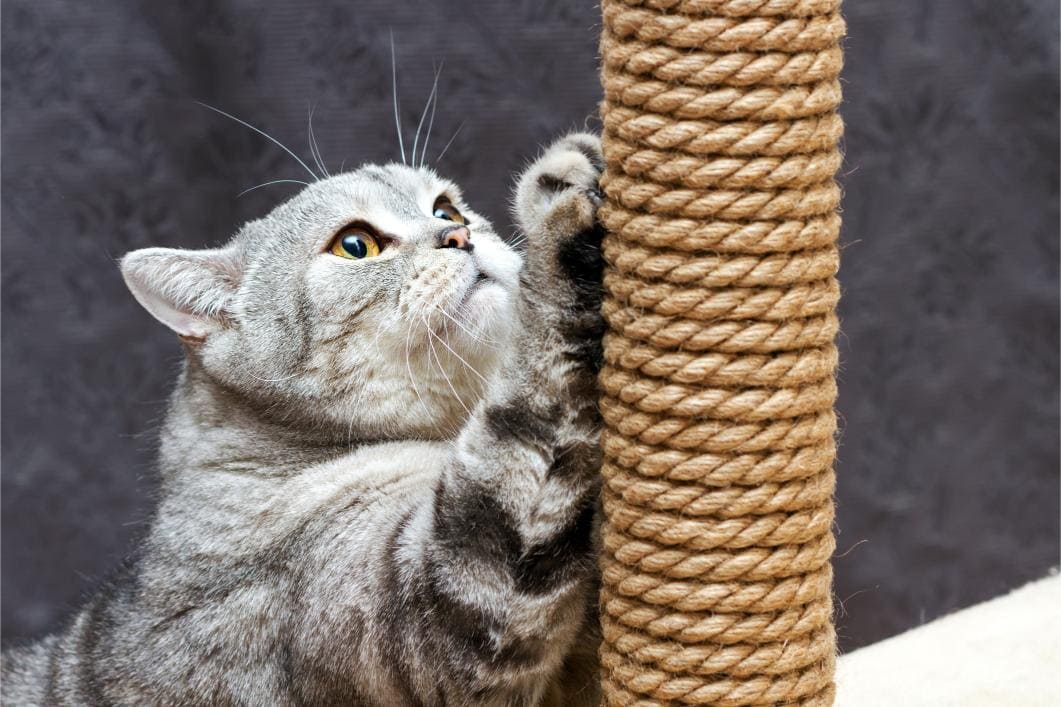Choosing the Right Scratching Post for Your Cat

It’s no secret that cats love to scratch—furniture, curtains, and even walls—but there’s a purrfectly good reason for their propensity to shred nearby surfaces: scratching sharpens their glorious claws and helps them shed the outer sheaths, which become dull over time.
If you value your sofa, and your cat, investing in cat scratching posts that best mirror your cat’s behavior is a win-win. But which scratch post to choose? In this blog, our team at Englishtown Vet MD explores the differences so you can choose the scratcher your cat will really sink her claws into.
Follow Your Cat’s Clues Before Choosing a Scratcher
Your cat may already be telling you which type of scratch post she would prefer. Consider the following clues:
- Does your cat love to cut a rug? If so, a horizontal scratching post is the way to go. If she’s always reaching up to rip apart the curtains, she would likely prefer a vertical scratching post.
- What type of fabric or surface is she drawn to? Cat scratching posts come in a variety of materials, from carpet or sisal to cardboard or wood.
- Consider your cat’s current size and weight. A kitten needs a smaller scratcher, and a larger adult cat needs something sturdy.
- Prepare to purchase more than one scratcher to place them in areas where your cat likes to scratch.
- How many cats do you have? A cat tree that provides multiple scratching surfaces would be ideal.
Selecting a Vertical Scratching Post
A vertical scratching post is perfect for cats that are long and lanky and love to stretch their paws high. Kittens and active cats also typically enjoy vertical scratching posts. The key with a vertical scratching post is ensuring that it’s sturdy enough that it won’t topple over and harm or frighten your cat. Another option? An anchored hanging cat scratcher that you attach to a wall or door.
Finding the Right Horizontal Scratching Post
If your cat tends to enter a room and immediately claw the carpet, a horizontal scratching post is just what she needs. Ditto for older cats, those with joint pain, and those that are overweight. Look for one large enough so she can stand on it, dig her front claws in, and pull back. For a slight twist on a horizontal cat scratcher, choose an angled scratcher so she’s still low to the ground, but has to stretch her legs further.
Cat Scratching Post Strategies for the Win
A few final tips:
- Ideally, cats should have both horizontal and vertical scratch posts (or scratchers that do double duty) to satisfy their changing desires and infamously finicky behavior.
- Location is key. If she’s already shredding the arm of the sofa, place a scratcher there.
- Entice your cat to use new scratchers by sprinkling (or misting) catnip on the scratcher. Then, reward her with a yummy treat for using her new scratch post!
Got more questions about feline behavior? We’re here to help! Contact us at today!
